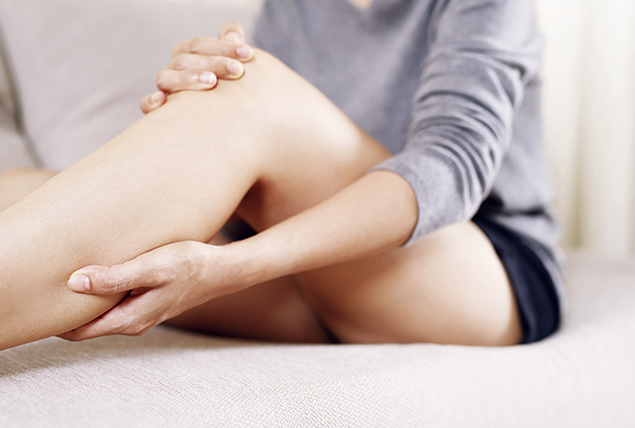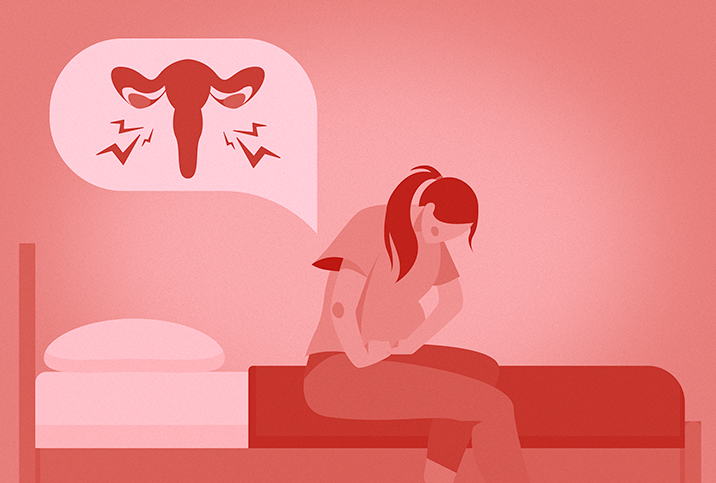Your Menstrual Cycle Can Affect Your Ligament Injuries

There is more to the female reproductive system than the usual common knowledge held by the average person (think menopause, the menstrual cycle and pregnancy). Various studies suggest the influence of estrogen and progesterone on the female anatomy goes beyond making babies and regulating the menstrual cycle.
Knowing the typical menstrual cycle includes a natural rise and fall of hormones, can it potentially affect ligament injuries such as a sprain or a strain? Let's find out.
The role of estrogen in the female anatomy
Although estrogen is sometimes referred to as the female sex hormone, it's present in the male body, too. For people with a penis, estrogen is critical in balancing testosterone in the production of sperm, and helps control sex drive and the ability to have an erection.
However, the influence of estrogen is not as far-reaching in men as it is in women, where estrogen contributes not only to the sexual and reproductive system but also to bone health, cognitive health and cardiovascular health, in addition to other essential bodily functions.
Estrogen levels are also known to increase during pregnancy to allow tendons and joints to relax and become more elastic as the body grows to accommodate the fetus. This elasticity is particularly important during childbirth so the pelvic joints can stretch without major tears.
Estrogen and ligament injury
The menstrual cycle takes center stage with ligament injuries due to how the estrogen levels in the body fluctuate at different stages. One study suggests an unlikely relationship between ligament, tendon and muscle injuries and the menstrual cycle.
The 2021 study, conducted by researchers from the University of Lincoln and Nottingham Trent University in the United Kingdom, followed the women's national soccer team from England over a four-year period. Researchers believe estrogen affects the risk of injuries experienced by female athletes in comparison with male athletes.
Estrogen levels throughout the menstrual cycle
The menstrual cycle can be divided into two phases. The follicular phase marks the first day of menstruation, roughly days one to six. At this stage, estrogen levels in the body are at their lowest.
The luteal phase occurs at the beginning of ovulation, roughly days 12 to 14. At this stage, estrogen levels rise to their highest peak shortly before ovulation kicks in. Estrogen levels drop sharply and rise again to a gentle peak throughout the duration of the luteal phase, before returning to typical levels.
The soccer team study observed that just as estrogen levels peak during pregnancy to help muscles, tendons and joints relax in preparation for birth, the same process takes place during the luteal phase (ovulation) of the menstrual cycle.
Many of the ACL tears sustained by the female athletes in the study were recorded during the luteal phase. The knee joints loosened between about 1 to 5 millimeters during this phase, resulting in less stable joints, said Nkechinyere Chidi-Ogbolu, Ph.D., who has a doctorate in biomedical engineering and works as a consultant in California.
The study suggests injuries mostly occurred in athletes who were overdue in their menstruation or late by a couple of days based on their expected menstruation start date. Overdue menstruation could be attributed to the "female athlete triad."
The female athlete triad
Three medical conditions make up the female athlete triad: energy imbalance, menstrual disturbances and decreased bone mineral density. It's most common in athletes with menstrual cycles. These athletes may experience energy variance resulting from low-calorie diets or excessive exercise, which can lead to hormonal imbalances. These imbalances can affect the menstrual cycle and may result in decreased bone mineral density, often marked by osteoporosis symptoms.
There is a stark difference between estrogen levels in a typical menstrual cycle and estrogen levels caused by the female athlete triad. While the estrogen levels during a normal cycle that lead to weakened muscles and joints are elevated, the estrogen levels in the athlete triad are often decreased, which leads to low bone density.
"When estrogen levels decrease outside of the normal menstrual cycle, such as during perimenopause, menopause and in the female athlete triad cases, leading to one's menstruation disappearing for months at a time, it could potentially lead to osteoporosis," said Duncan Lloyd, M.B.B.S., owner of a general practice in South Africa. "[This is because] estrogen is needed for proper closure of the epiphyseal growth plates both in females and males."
A lack of functional estrogen levels in the body could lead to cortical bone loss.
The bottom line
Estrogen and progesterone play essential roles in sex and pregnancy, but they may be far more influential in maintaining the health of the body than previously assumed.
For anyone in search of a new healthcare professional, try Giddy Telehealth. A simple online portal provides access to hundreds of qualified healthcare professionals whose expertise covers the full scope of medical care.


















